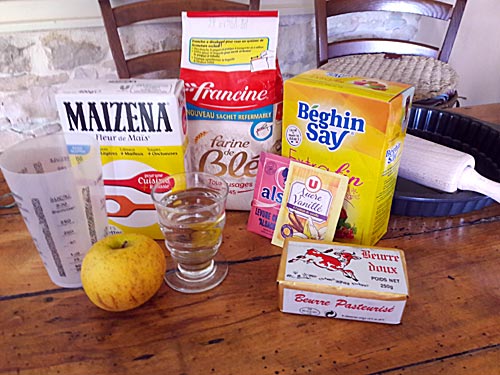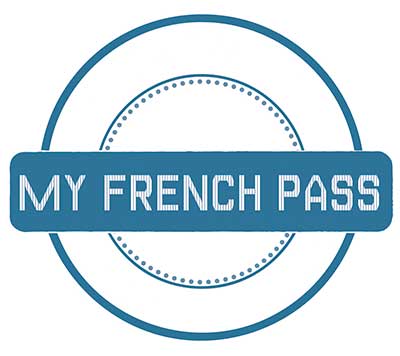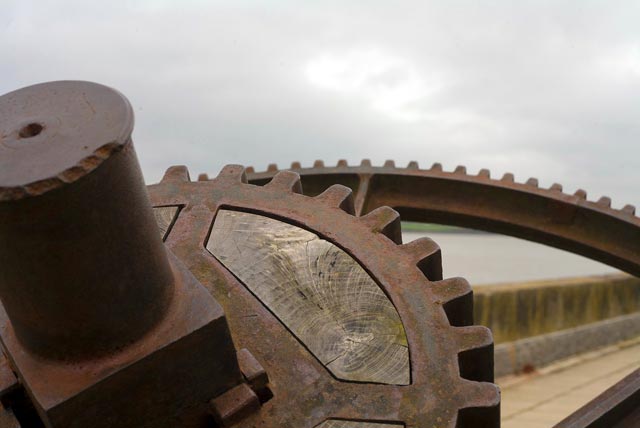Is it possible to learn a language with one’s hands ?
Yes, it’s possible to learn French creating the most amazing traditional pastries!
A recipe contains a lot of vocabulary and grammar notions, so that you learn a lot.
Let’s see the way of expressing the quantities, in this list of ingredients (who will guess which recipe it is?):
La pâte :
- 100 g de maïzena
- 250 g de farine
- 150 g de beurre
- 1/2 sachet de levure en poudre
- 60 g de sucre en poudre
- 1 sachet de sucre vanillé
- 3/4 de verre d’eau.
Le caramel :
- 30 morceaux de sucre ou 150 g de sucre, un peu d’eau.
Garniture :
- 6 pommes (type golden, Canada)

Explanations…
- Weight = ‘Le poids‘.
Will you use ‘une balance‘ (scale) or ‘un verre gradué‘ (graduated glass)? Whatever, the quantities are expressed in ‘grammes‘ (g or gr.), more rarely in ‘kilogramme‘ (kg). - Volume (liquids) = ‘Le volume‘ is expressed in ‘Litre‘ (l.), ‘décilitre‘ (dl), ‘centilitre‘ (cl) or ‘millilitre (ml)
- Containers = ‘Les contenants’. It can be ‘un sachet‘ or ‘un paquet‘, ‘un verre‘, ‘une cuillère à café‘ (c. à c.) or ‘une cuillère à soupe‘ (c à s.). The spoon content is ‘une cuillerée‘. It can be ‘une pincée‘ of salt (‘sel’) or sugar (‘sucre’)
- Fractions = ‘Les fractions‘. It can be ‘un quart (¼)’, ‘trois quarts‘ (3/4), ‘un demi-…verre‘.
- Defined quantities = ‘Les quantités définies‘. ‘Le, la, les…pommes‘ or ‘6…pommes‘
- Undefined quantities = ‘Les quantités indéfinies’. Sometimes, you can read : ‘Un peu de…eau‘, ‘quelques…pommes‘. It means, ‘a bit of …water’, ‘some…apples’
By the way, did you guess which recipe we are studying ?
The famous Tarte Tatin, congratulations !!
To go on learning French and pastry on the same time, contact My French Pass and attend our French’n Pastry scheduled or on-demand workshops : making or simply enjoying the most authentic French desserts !

